Like What You Read and Want More?
Get Updates

Like What You Read and Want More?
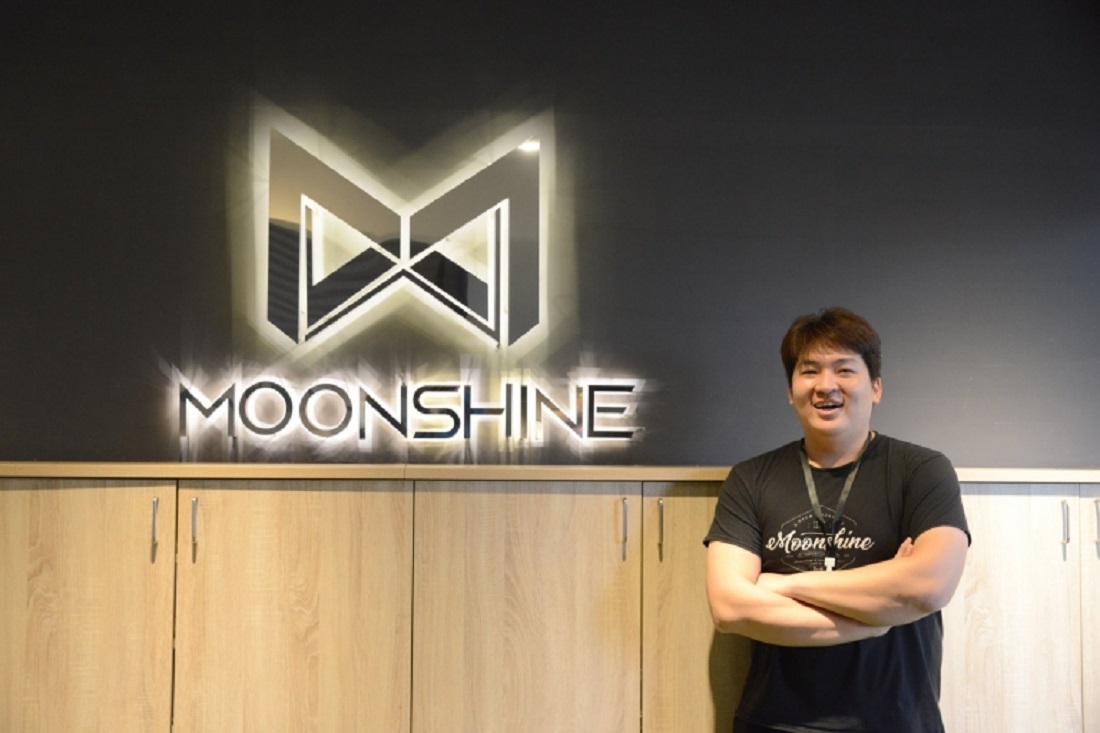
Moonshine Animation Founder and CEO Mr. Lin
A visit to Moonshine Animation:
an office that feels like a large Internet café, giving artists an enjoyable
working environment
For a behind-the-scenes look
inside a major animation studio to see how they configure their computer
equipment and what role a newly purchased GIGABTYE server is playing, PCDIY!
will take you for a tour into Moonshine Animation’s Nangang head office,
featuring an exclusive interview with founder Mr. Lin to give you a deeper
understanding into the field of animation and visual effects and the computer
equipment required for these applications.

MoonShine Animation HQ is located in Nangang near Kunyang
MRT Station. On the first floor is Moonshine Café, providing an open space to
employees and customers for discussion and relaxation.
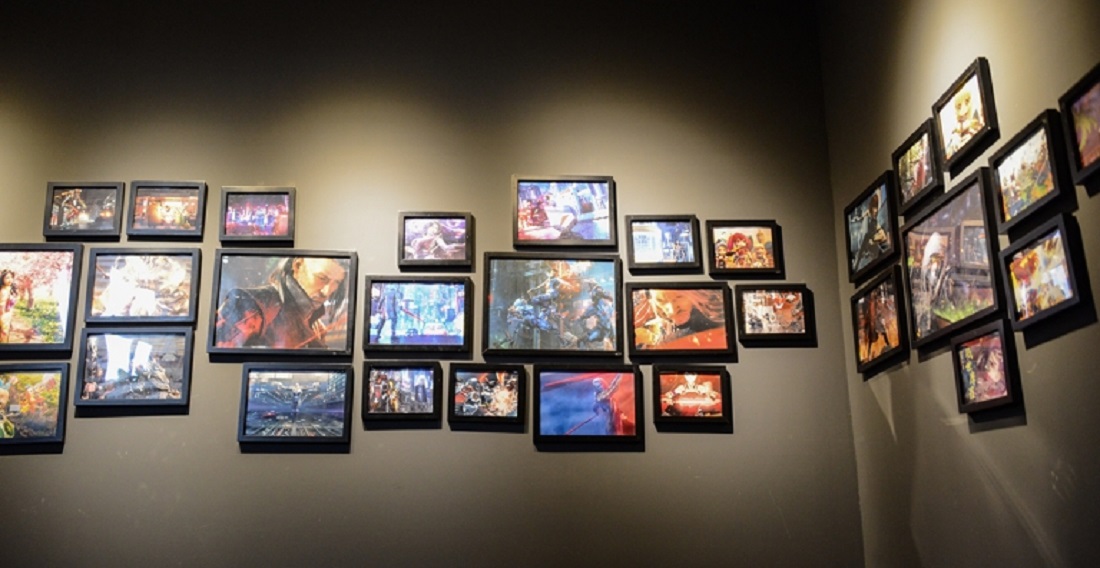
As you walk up to the 3rd floor, the walls of
the staircase are covered with various works from Moonshine Animation.
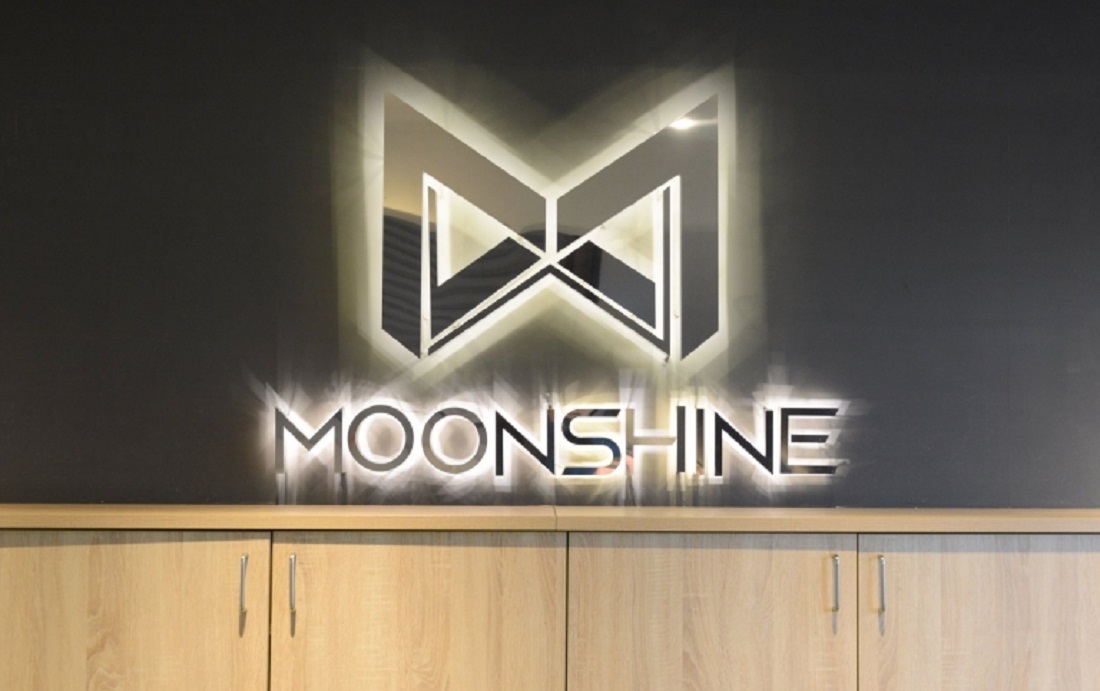
A prominent Moonshine logo awaits at the 3rd
floor entrance.
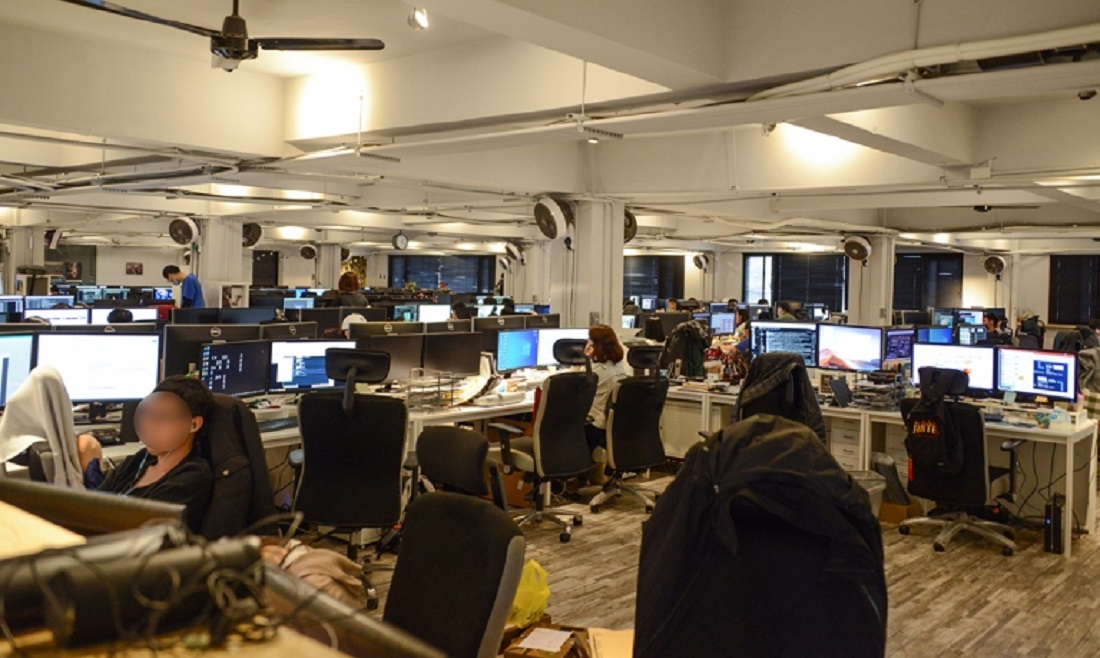
Moonshine Animation’s office adopts a loft-style open
plan design, in a similar style as global creative companies such as Google or
Pixar. Almost all employees have dual-screen monitors on their desks, providing
a comfortable working setup.
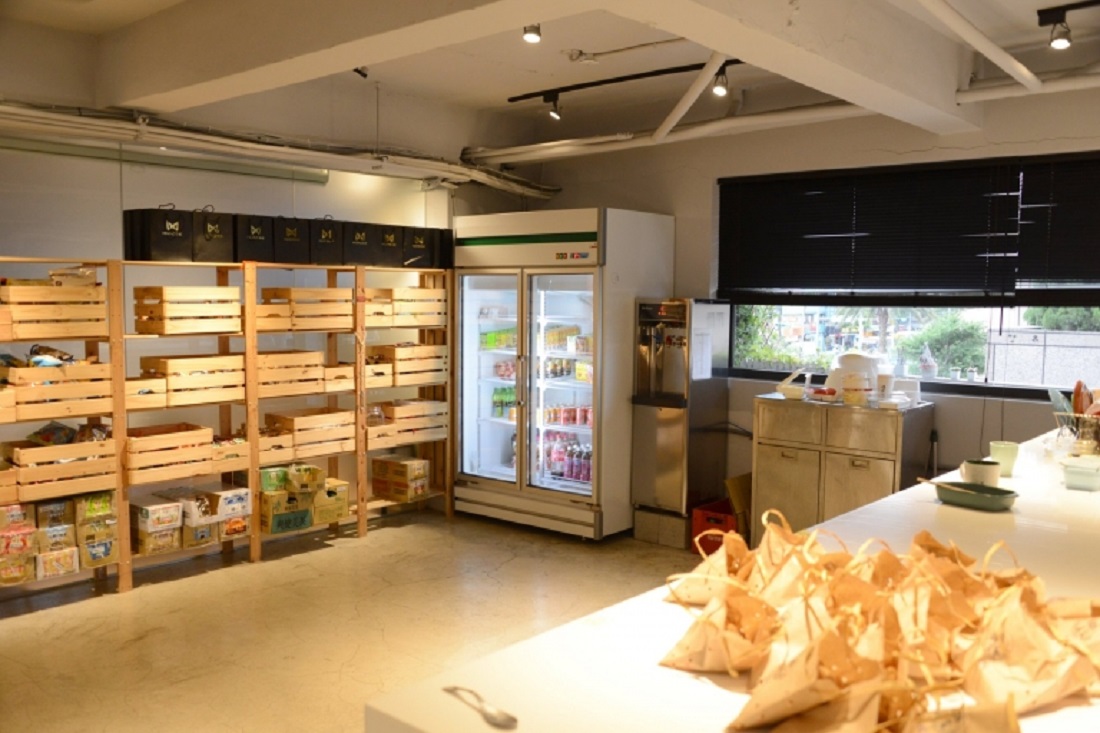
A creative-oriented office also naturally needs a kitchen
that provides beverages and snacks for employees to enjoy (as long as they finish
their work…).
As readers may be unfamiliar with the business scope of an animation studio, Mr. Lin explains that Moonshine Animation can make concept maps, posters, 3D advertisements, animation and interactive content, as well as help with cultural content reconstruction, all of which is work an animation studio is usually expected to produce. Moreover, since many students and the public have become interested in animation production, the company will also hold online courses so that students can absorb animation-related knowledge via these classes.
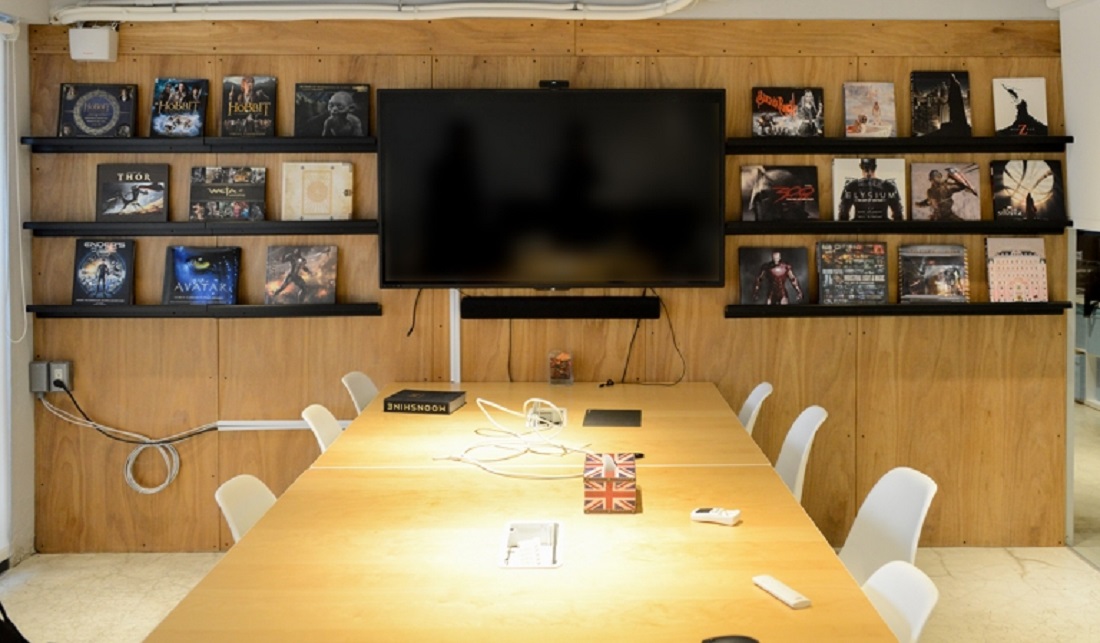
One of the meeting rooms at Moonshine Animation,
featuring a large 4K monitor with picture books from various films displayed on
both sides.
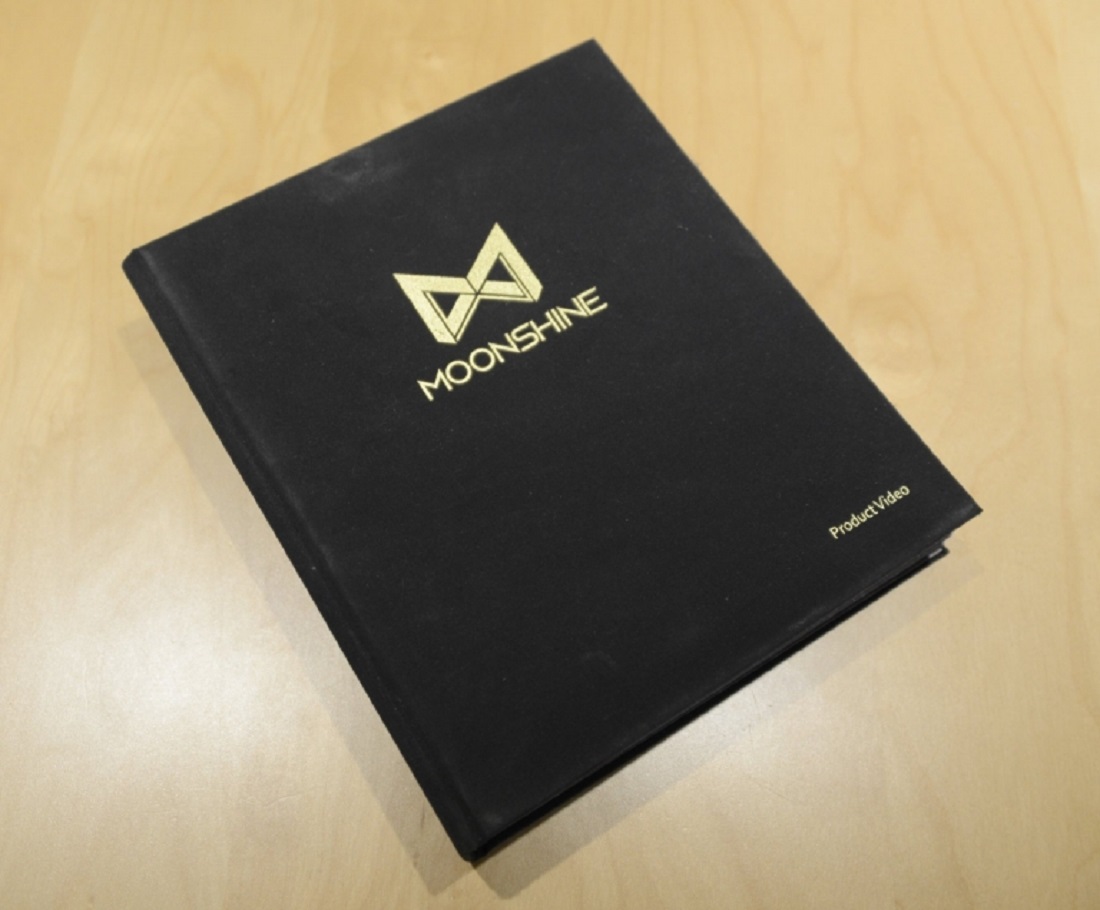
This large book is Moonshine Animation’s product catalogue,
featuring a collection of their previous work.
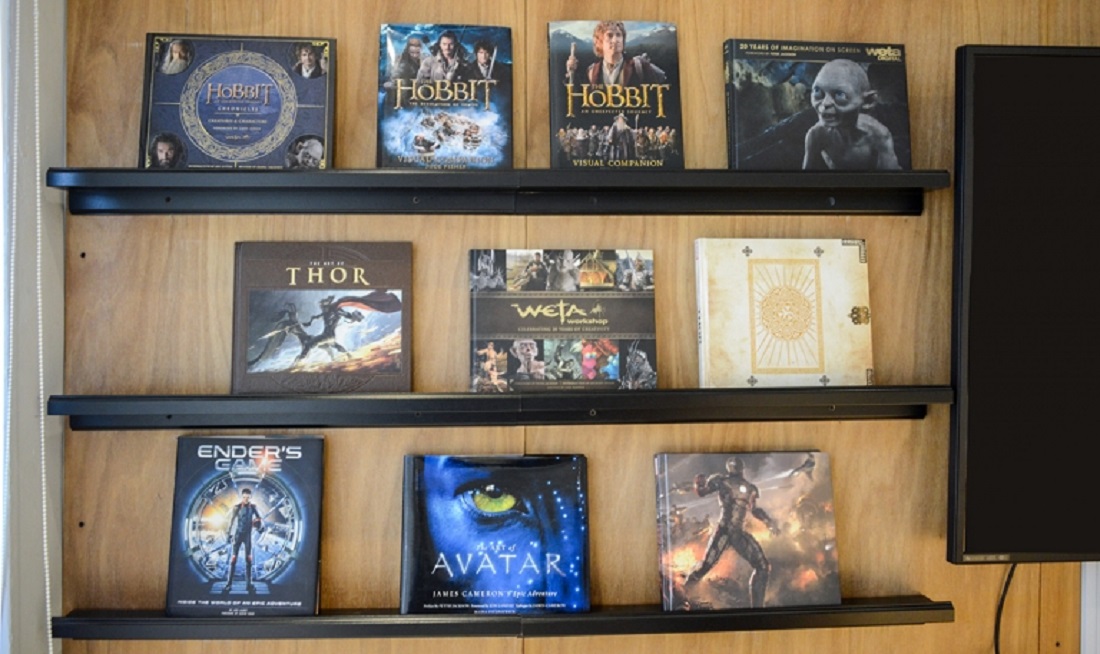
Shelves display picture books of various well-known films
– mostly science fiction or fantasy movies.
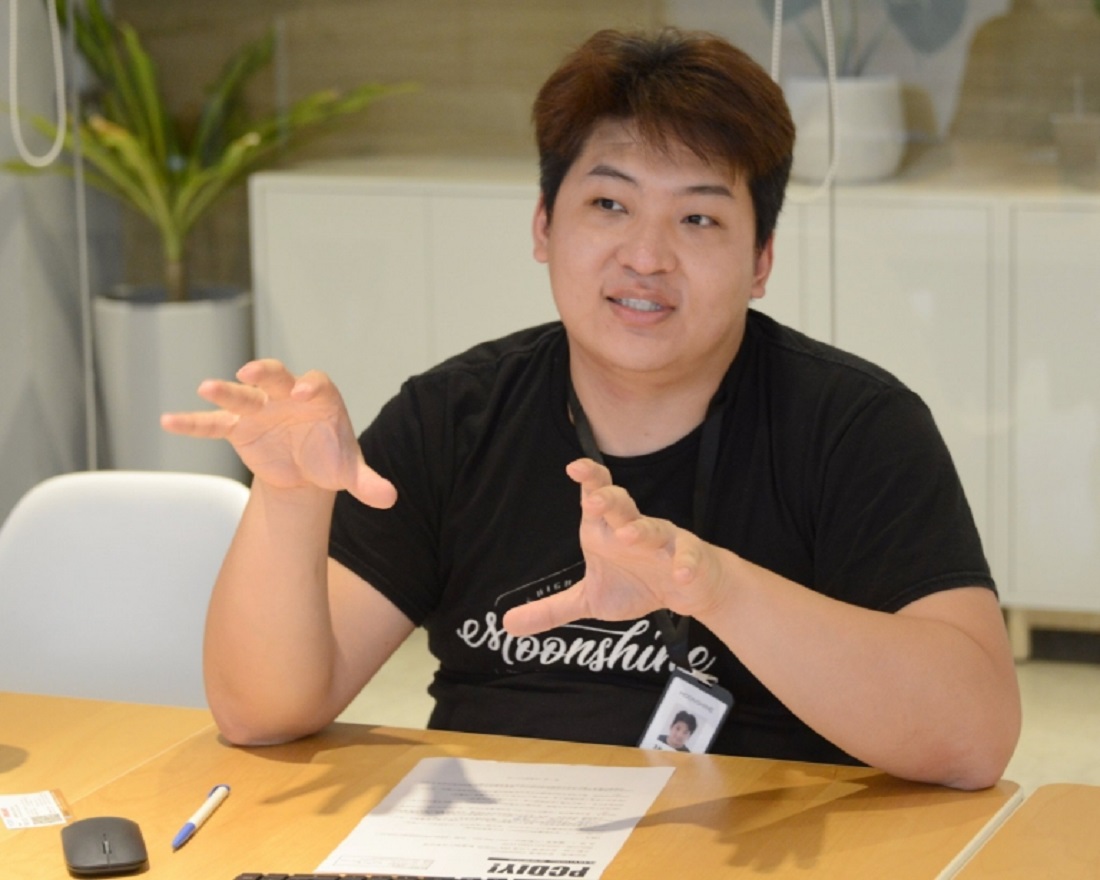
PCDIY! interview with Mr. Lin, founder and CEO of
Moonshine Animation. Listen to him talk about how his company uses the power of
technology to achieve innovation in the field of animation.
Animation production is not
easy! A large amount of time and manpower is needed even just for a few seconds
of footage
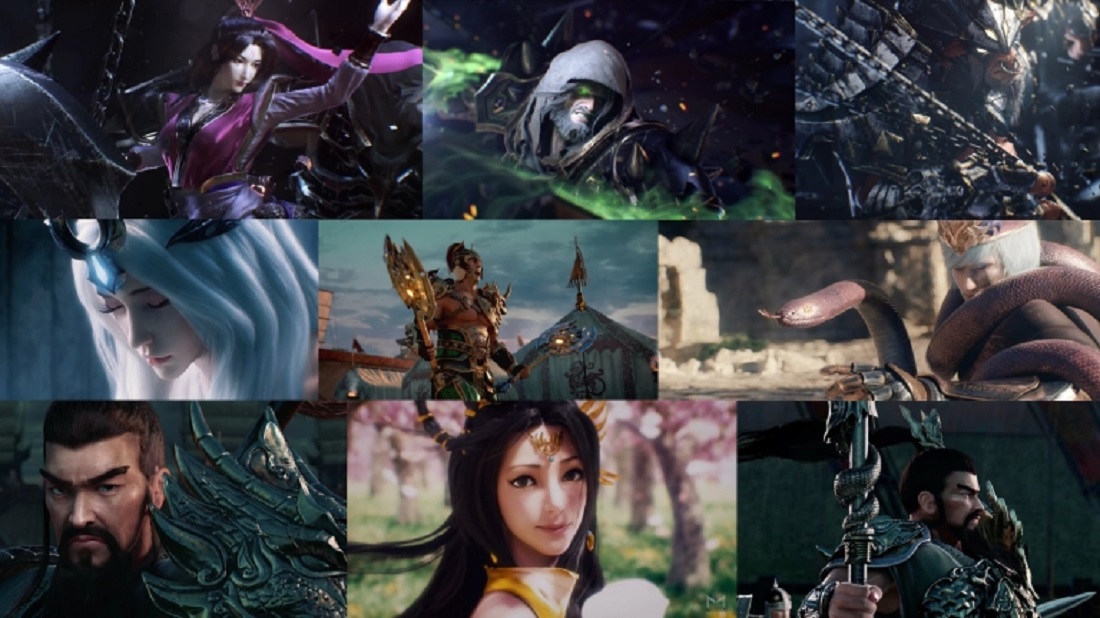
A gallery of work from Moonshine Animation, mostly
showing scenes and characters from video games.
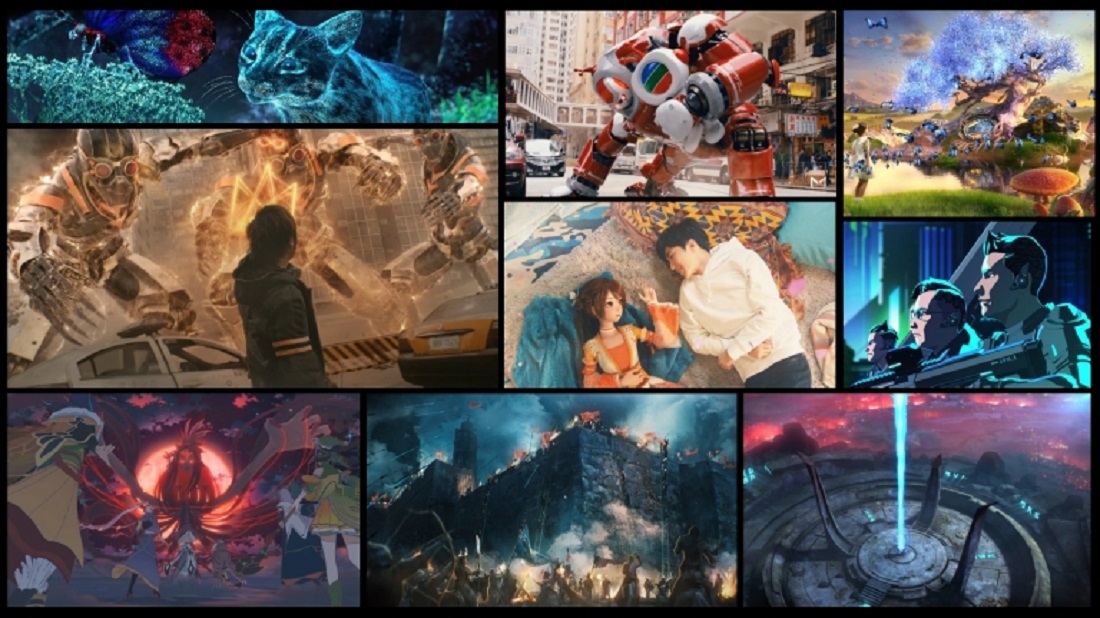
A gallery of work from Moonshine Animation, mostly
showing animated special effects.
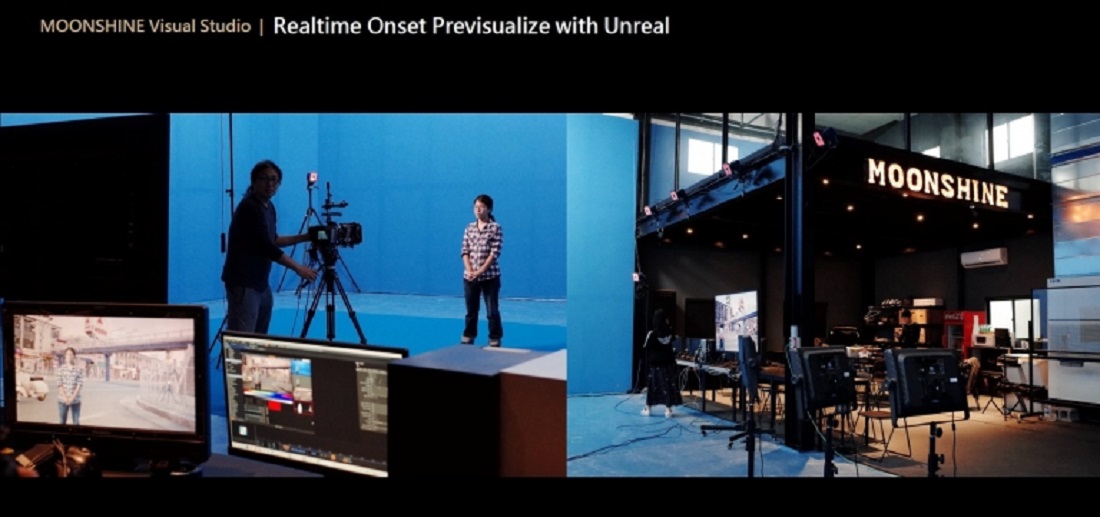
This image from the company’s introduction slide deck shows
some filming scenes taken from their production studio; using blue screen
technology, scenery can be instantly projected behind the host.
Using AI technology to assist
in animation production leads to increased efficiency and great results!
As special effects in animation become
more advanced, many companies have been using AI (Artificial Intelligence) to
assist them with production. Moonshine Animation has also adopted AI
technology, and Mr. Lin briefly explained the general processes involved during
production of their work.
First of all, Moonshine Animation
has a virtual film studio in Neihu, where 3D motion capture (MoCap) is
performed and used to create video game content. During the process of creating
an animation, characters must be presented with a lifelike disposition, but a
computer cannot figure out by itself how to create human expressions, so this
can be done by training AI with deep learning to assist in the rendering process.
For example, the above images include some scenes illustrated using a Japanese gouache
method in the style of Hsueh-Hu Kuo (a famous Taiwanese painter). After undergoing
AI training, the computer is able to learn the illustration method including
brushstrokes so realistic pictures can be rendered, and the resulting effect
won’t look like a filter. With the help of new technology, Moonshine Animation hopes
to further improve other animation methods in the future.
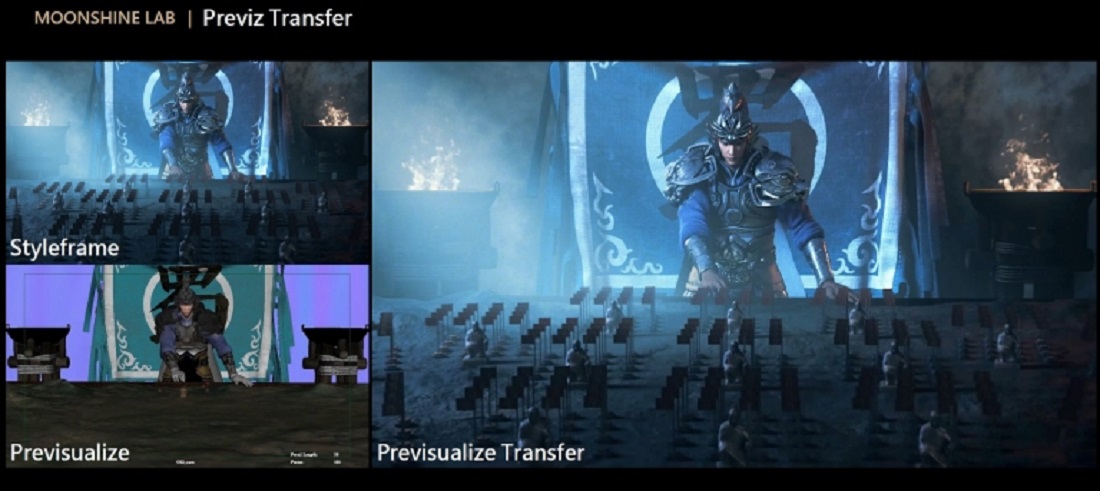
During animation production for a video game, a single “styleframe”
can be used to create a style setting, which can then be combined together with
different “previsualization” frames and transferred (“previsualize transfer”)
to create the final animated clip illustrated according to the style setting.
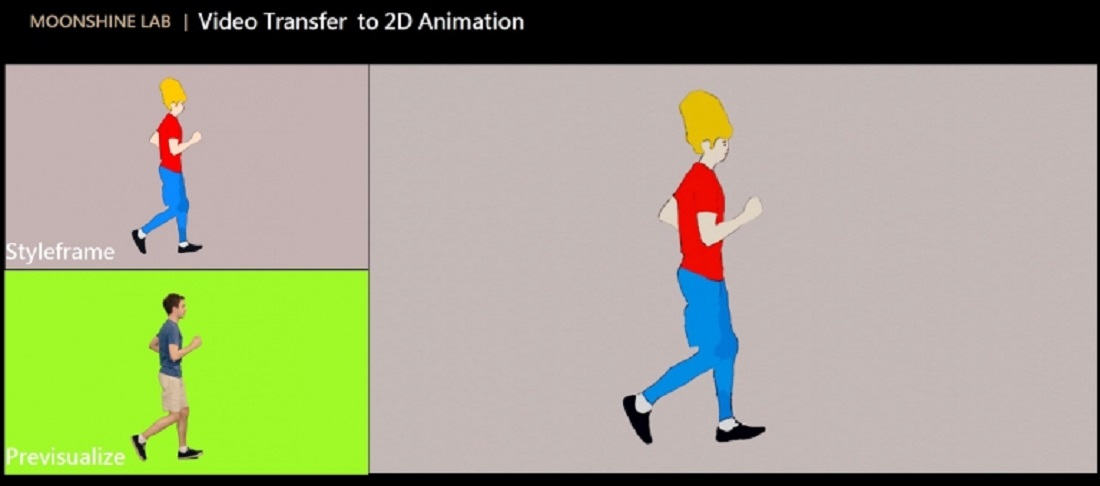
In 2D animation, you can also make a single frame from a
comic into a style setting, and then combine it together with a real person’s
motion capture (MoCap) footage to synthesize a final animated clip. This
technique is one of many already commonly used to create many different
animated films.
After that, a simulation of an animation
can generated in a preview pane, by first using a single “styleframe” to set an
illustration style and combining it with video footage of the scene we want to
create. Using AI the computer will apply the styleframe to the footage to
instantly present the desired result, and can even clearly depict light and
shadow details! A 2D-style of illustration can even be synthesized with
live-action motion capture footage to achieve a style of animation similar to
Japanese Manga cartoons, using a method known as “Toon Shading”. Of course, AI
technology can also be used to create “Deep Fake” imitations of people’s faces
and expressions.
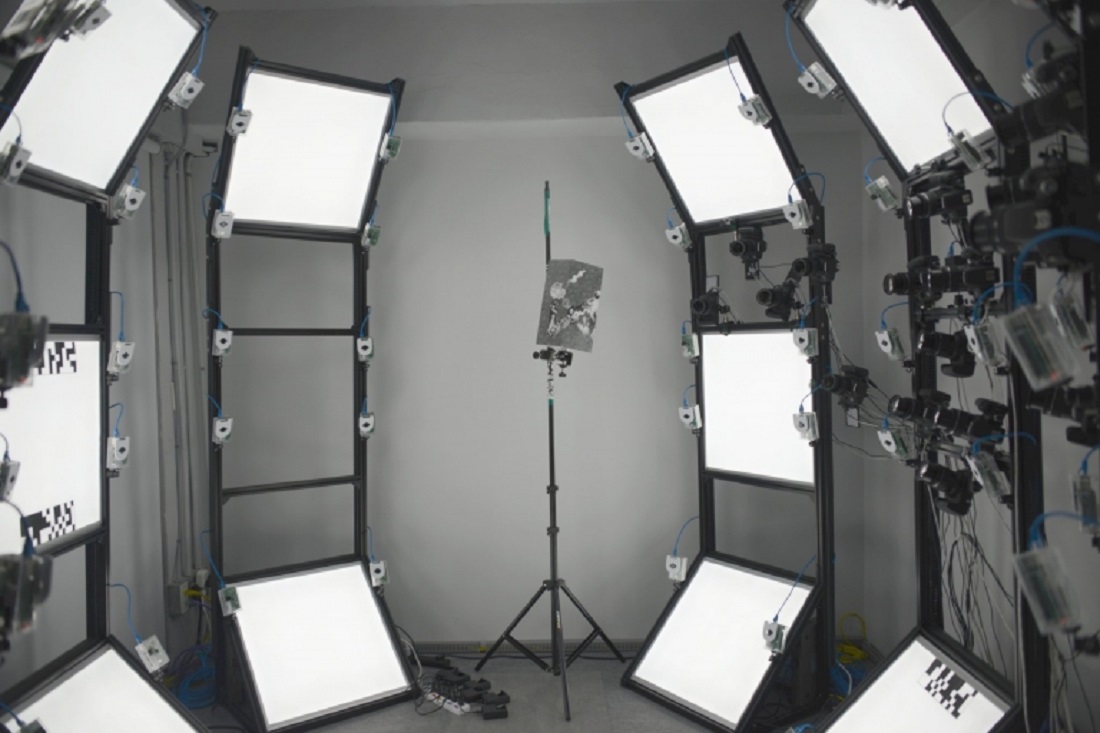
360-degree character image capture area
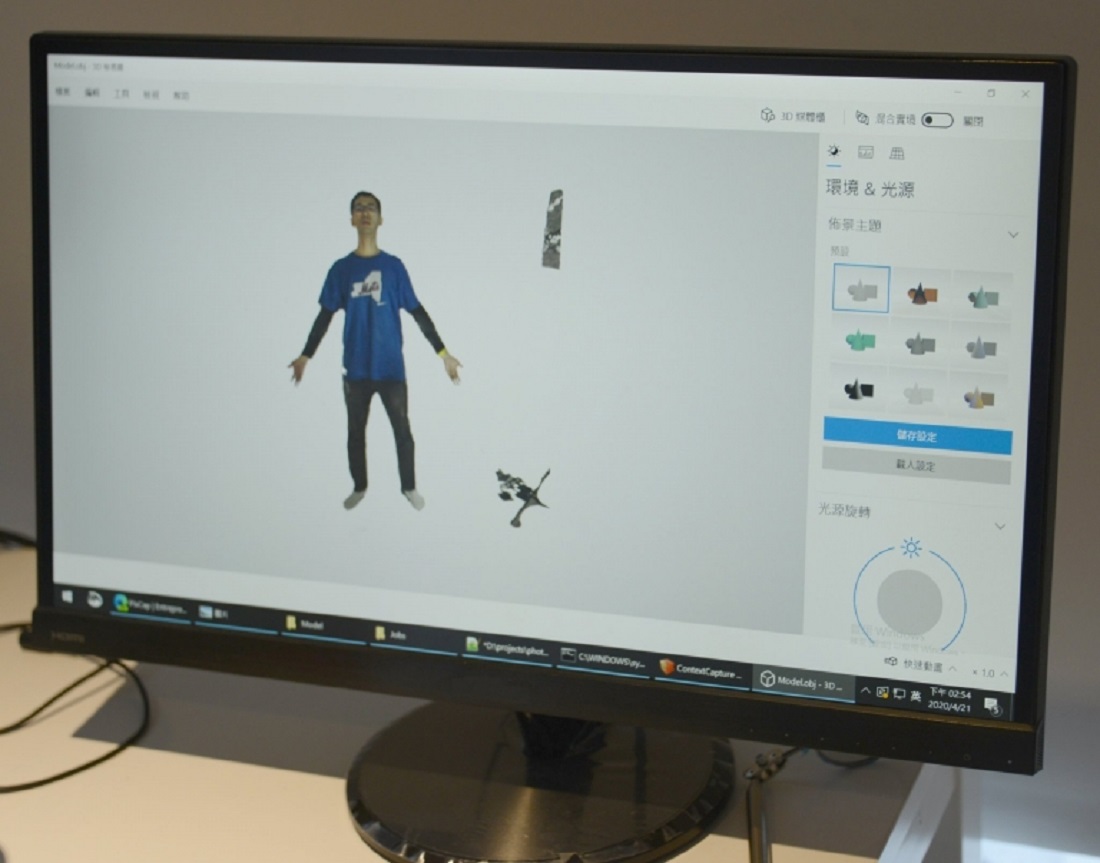
After a character has been photographed, the 360-degree
image can be used for all different kinds of animation
To put it simply, AI can simulate
the appearance of a finished piece of animation even before colors have been
painted in, reducing the amount of work previously required to draw each frame
one by one, and improving animation quality. Although it cannot completely
replace manual production, AI-based animation production can assist in creating
many scenes that previously required a huge amount of manual illustration (such
as animated scenes that haven’t been seen before, or scenery that does not
exist in the real world). So long as some allowance is first given to
creativity, data from the artist’s drawing methodology and illustration style
can be fed into the computer system, and after being trained with this data the
AI can then produce the desired animation.
Naturally, AI can also be used to
enhance an image from 2K to 4K resolution, and from black & white to color!
It could be said that this kind of disruptive technology will change animation production, not only solving problems that could not be solved in
the past, but also accelerating the completion of finished work. Therefore, AI
has become a major tool used in animated films.
Moonshine has two main uses for
GIGABYTE’s HPC server – the first is for AI computing!
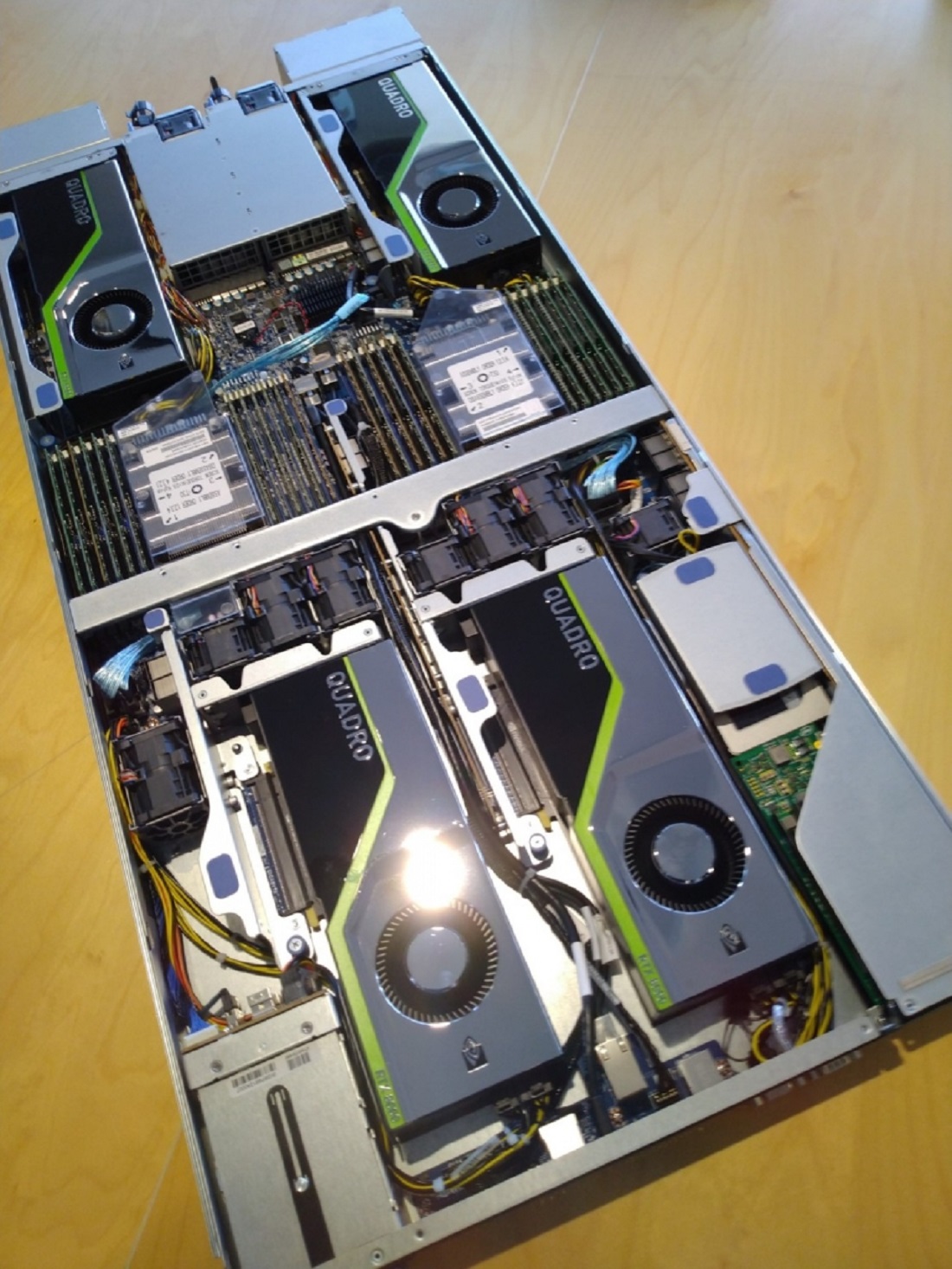
A glance at the internal configuration of the GIGABYTE
G191-H44 server used by Moonshine Animation. It features dual Xeon Gold 6240
processors, together with 768GB in system DRAM when fully loaded and a total of
four NVIDIA Quadro RTX 8000 graphics cards (with 48GB GDDR6 memory each),
making it the company’s strongest dedicated graphics server for VDI.

GIGABYTE’s G191-H44 system diagram – it can support dual
Skylake SP (1st Generation) or Cascade Lake SP (2nd
Generation) Xeon Scalable processors, and features four PCIe 3.0 x16 expansion
slots for GPU cards, as well as a total of 24 DIMM slots that can support up to
768GB of system memory if 32GB DIMMs are installed in each slot. And via the
Southbridge Intel C621 Lewisburg I/O control chip, the system can support up to
four 2.5 inch SATA HDD / SSD as well as other peripheral devices.
The most powerful use for
GIGABTYE’s G191-H44: the best remote desktop server!
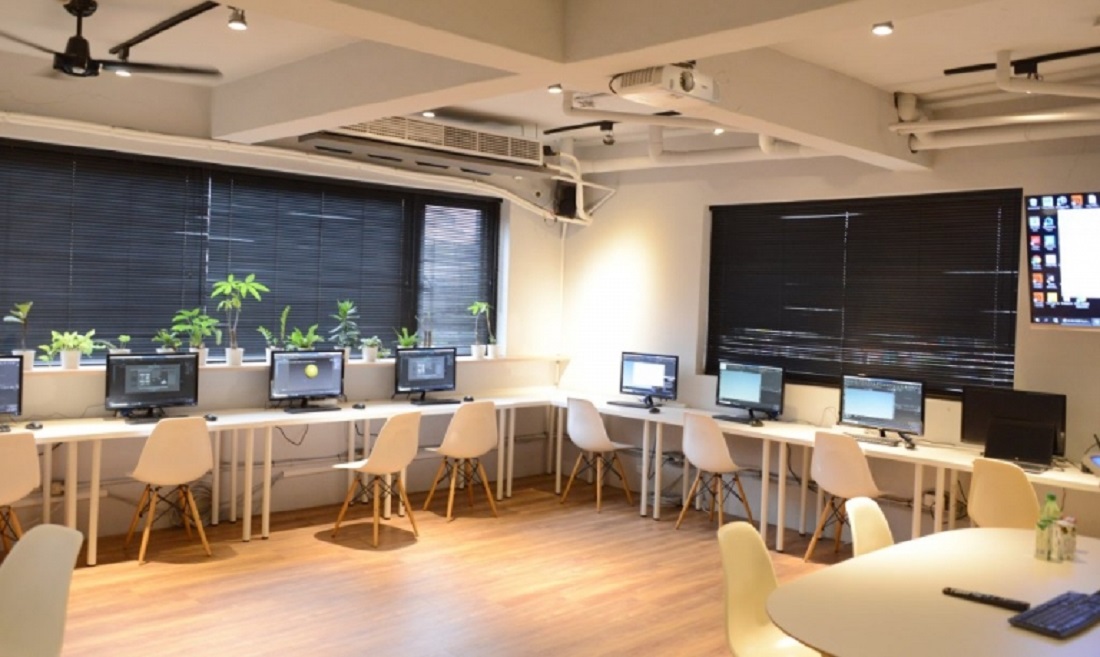
A peek into a computer classroom at Moonshine Animation –
each monitor seems to be missing a computer?! However, they all have been
turned into professional workstations using remote desktop technology.
Moonshine Animation computer classroom:
running animation software without any computers
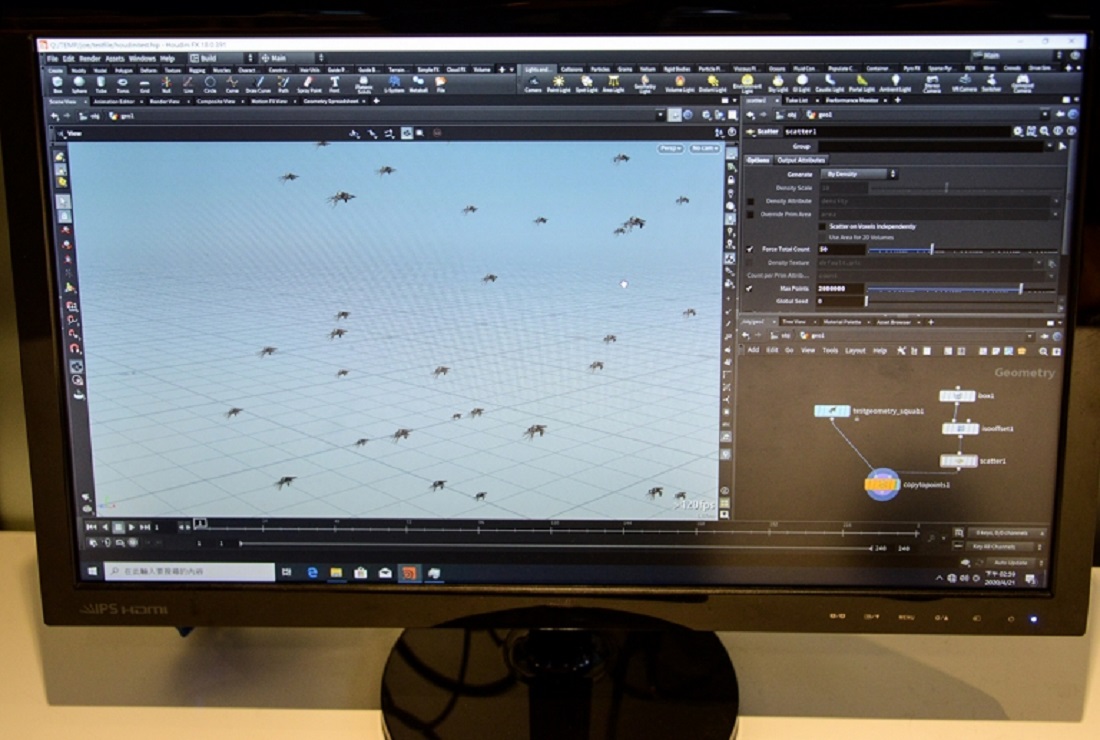
The computer classroom can be used to run many different types
of software, such as Adobe CC, Maya 3D, Unreal and other creative art software,
animation software, video editing software or game production software. This
image shows the use of Houdini FX software for real-time rending of multiple 3D
models.
▲ Mr. Lin used an
ultra-basic Compute Stick to connect to the GIGABYTE server and run 3D special
effects production software Houdini FX for real-time rendering of multiple 3D models.
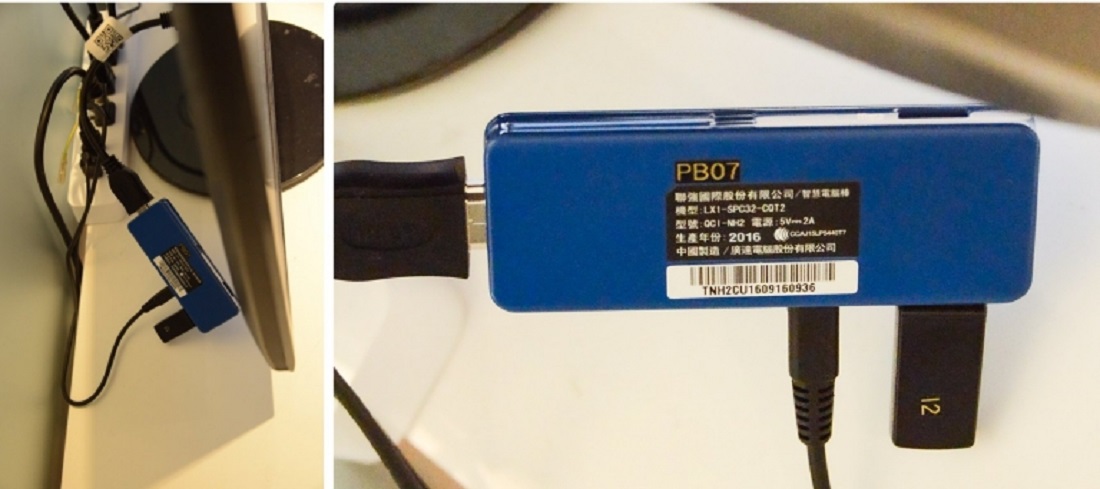
You can see behind each screen that there is in fact only
a single “Compute Stick” installed! This ultra-compact computer only delivers
very basic performance, featuring entry-level specifications of an Atom Z8300,
Windows 10 Home 32bit, 2GB of DDR3 and a 32GB eMMC drive, and is connected to a
keyboard, mouse, screen and the Internet. Using a VDI (Virtual Desktop
Infrastructure) environment to connect to GIGABYTE’s G191-H44 server allows
students to learn and create animation. Of course, employees working from home
can also connect to the server via this remote desktop method.
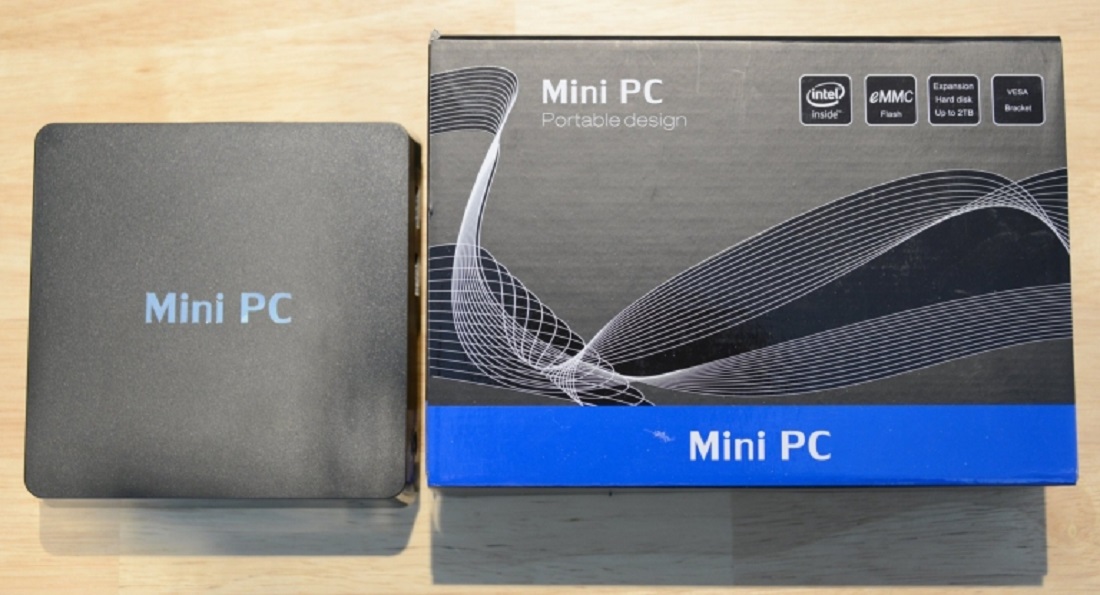
Moonshine Animation has also prepared some Mini PCs that
can be combined with a regular screen, keyboard and mouse to become a Thin
Client, connecting to GIGABYTE’s server to provide professional workstation
capabilities for animation creation.
As for the benefits of deploying
this GIGABYTE server, how can it help increase productivity? Mr. Lin explains
that by dividing the resources of this server into 24 professional-grade
virtual machine accounts, the average cost of each virtual machine is only
around $25,000 NTD ($835 USD), but delivers the same capabilities of a
professional artist’s workstation. In addition, with VDI employees can now not
only use their own computer to perform animation production, but also continue
their working progress when they get home. If necessary, the company can also
dynamically allocate virtual machine resources based on the number of accounts
being used, greatly enhancing the efficiency of employees’ work.
Moonshine’s vision: to become a
leader in the animation industry

Let your dreams shine! A signature slogan from Moonshine
Animation’s 1st floor café.
Like What You Read
And Want More?